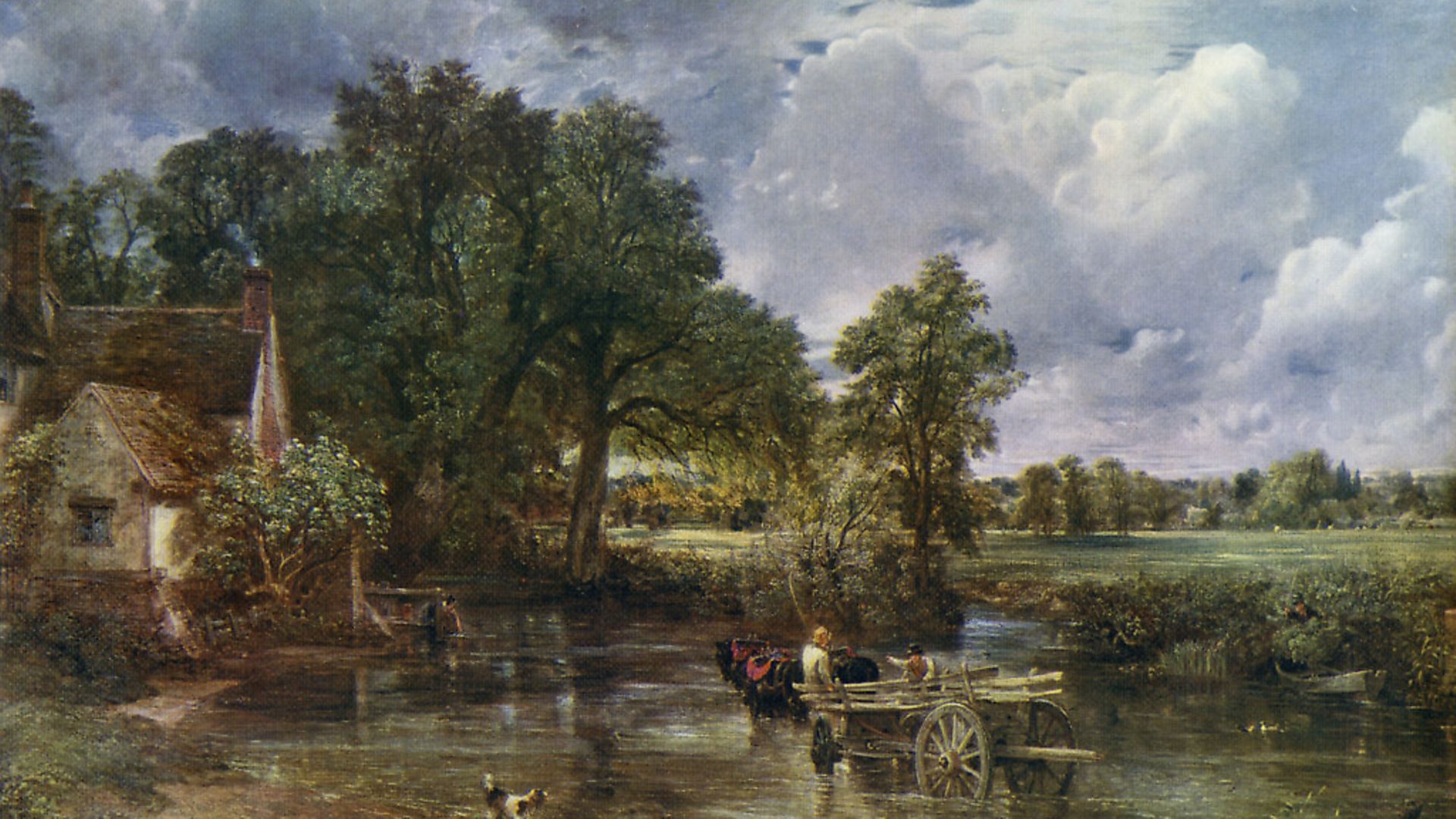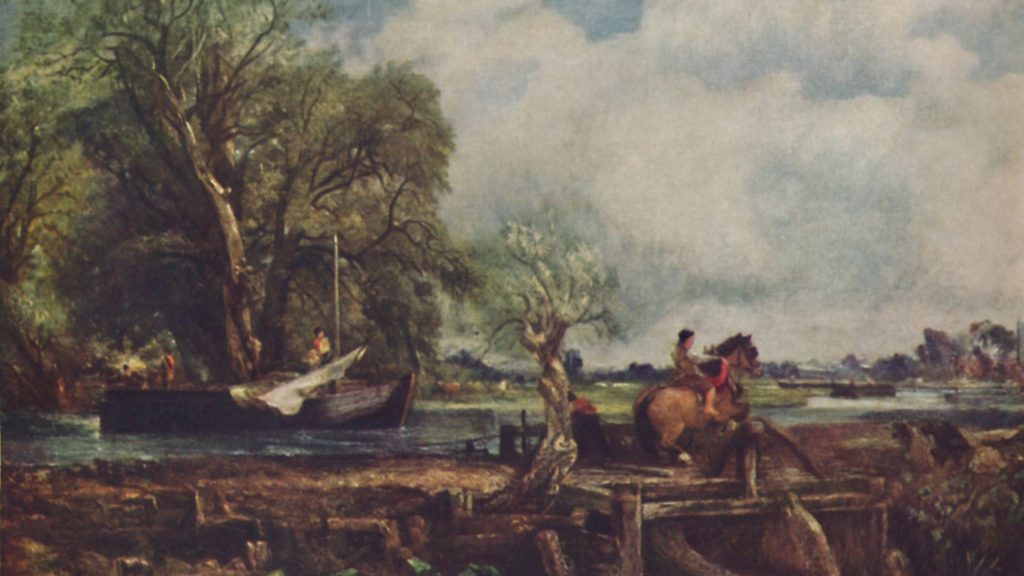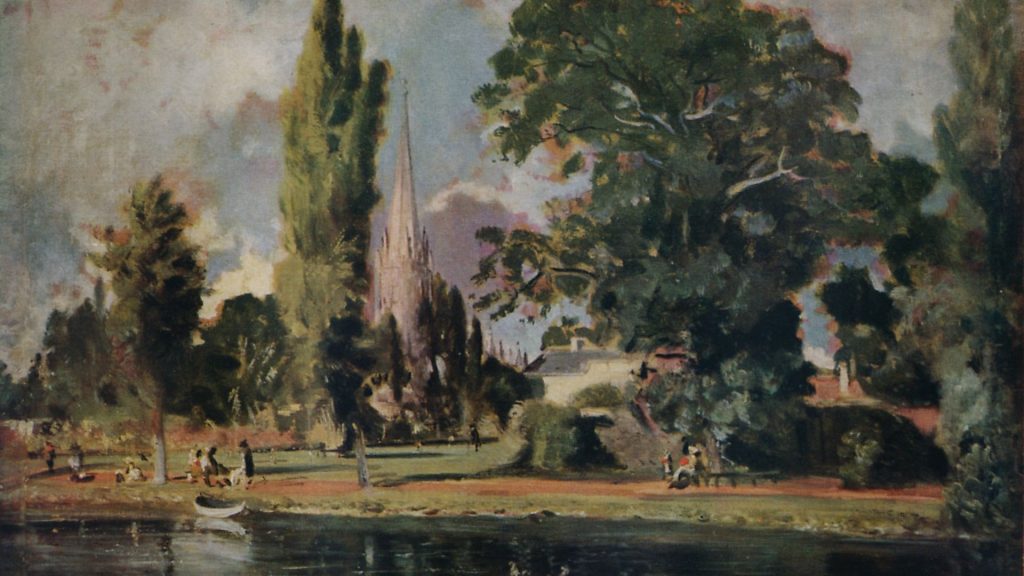
He seems the quintessential English painter but John Constable was rejected by the establishment here. Fortunately, he was embraced across the Channel.

Towards the end of his life, John Constable travelled by train to his summer home in Dedham Vale, on the Essex-Suffolk border. Now widowed, the often-downbeat artist was in the grip of a depression; a malaise worsened by his ever precarious finances and the pressure of raising seven children. As the train eased towards it destination, Constable briefly forgot his worries as he gazed yet again on the gentle countryside. It was a place the artist had painted innumerable times but still it had a hold over him. The thickets and hedgerows, the open fields, the toiling farm workers, the bright skies – this was the place for which he felt the most affection. With a smile breaking across his face, he turned to his fellow passengers and said, ‘It really is rather beautiful here, isn’t it?’ ‘But of course it is!’ bellowed a well-to-do gentleman. ‘This, sir, is Constable country.’
Constable was both delighted and surprised by this reaction; delighted because of the recognition but surprised because he had rarely received such fulsome praise. In actual fact, Constable – that most English of painters – had been largely dismissed by his fellow countrymen.
Though he first picked up a brush in 1799, he wouldn’t be elected to the Royal Academy until the late 1820s. It seems that the criticism sometimes directed at Constable today – that he was but the painter of pleasant, ‘chocolate-box’ landscapes – wasn’t that dissimilar to the way he was viewed by the British artistic establishment of the 19th century. Unable to sell his work, Constable was reduced to painting portraits of society folk. He must often have wondered whether he wouldn’t have been better off had he followed his father into the corn business.
Had Constable turned it in, we would have been denied The Corn Field, The Leaping Horse, Hadleigh Castle, his later, bleaker studies of Salisbury Cathedral – in other words, paintings that don’t just belong in the British artistic pantheon but deserve a gallery all to themselves. And for convincing him to stay at it, our gratitude is owed in a perhaps surprising direction: across the English Channel in France.
More specifically, we should be giving thanks to the Rouen-born Theodore Gericault. The man responsible for The Raft Of The Medusa – the painting brilliantly pastiched by Peter Mennim for the cover of The Pogues’ Rum, Sodomy & The Lash – Gericault saw Constable’s most celebrated work The Hay Wain while visiting London in 1821 and was spellbound. ‘What Constable says [in The Hay Wain] about the green of his meadows can be applied to every tone,’ he enthusiastically noted in his journal.
Gericault made a point of praising Constable’s work on his return to Paris. Those who heeded his words included Eugene Delacroix whose response to the Englishman’s canvases was to completely repaint the background of his 1824 work Massacre de Scio. The Paris-based British art dealer John Arrowsmith also noted Gericault’s enthusiasm, promptly purchasing four Constable paintings including The Hay Wain.

Upon its being exhibited at the Paris Salon in 1824, The Hay Wain was awarded a gold medal. This recognition – together with the success of the Constable exhibition held at Arrowsmith’s gallery – not only had an impact on the artistic community; it also improved the state of the artist’s finances. The man who struggled to sell 20 paintings in his homeland over the course of his lifetime sold an equivalent number in France in the space of a few short years.
And was he grateful? Well, no, not particularly. One of life’s grumpier souls, Constable refused countless invitations to come to Paris to promote his work. ‘I would rather be a poor man at home than a rich man abroad,’ he stuffily remarked to a friend. With his wife Maria severely ill, it’s easy to understand Constable’s reluctance to leave his Brighton home. A full work slate also made a French adventure impractical. What wasn’t forgivable, however, was falling out with John Arrowsmith – over what, no one’s entirely sure although it probably had something to do with money – as a result of which Constable was denied access to the lucrative French market.
Though Constable fell out with his Parisian patron, French artists remained infatuated with his work. Thrilled by his desire to depict nature and rural life realistically, young painters the country over began to reject formalism and embrace his style of landscape painting. Scenes that would once have provided the background to epic events were now seen as significant in and of themselves.
The French countryside – long thought to be beneath artists – became so great a concern that painters such as Theodore Rousseau, Charles-Francois Daubigny, Charles Jacque and Jean-Baptiste-Camille Corot regularly gathered at the village of Barbizon on the edge of the Forest of Fontainebleau, 40 miles south-east of Paris.
Active from the late 1820s until the early 1870s, the Barbizon school boasted students such as Jean-Francois Millet (one of the movement’s founders), Jules Dupre, Paul Huet and Constant Tyroon. Defined by its fine brush work and unabashed affection for the natural world, the school later drew attention from a younger generation of artists the studying in Paris. Among those who trekked to Fontainebleau to paint the forest were the French-based British artist Alfred Sisley, a tailor’s son named Pierre-Auguste Renoir and an ex-cavalry officer called Claude Monet.
From Constable to Rousseau to Monet – they’re funny things, artistic food chains. Now, to say that we wouldn’t have more than enough paintings of water lilies had Constable not painted The Hay Wain is clearly ridiculous. There is, however, something very attractive about the way in which painters are influenced – either consciously or unconsciously – by those that have gone before. More attractive still is the ability of artistic influence to cross borders.
But what of our hero? Alas, the triumphs of the Barbizon school came too late for John Constable. After losing Maria to tuberculosis in 1828, the artist slipped into a deep depression, the only upside of which was a clutch of brooding canvases – most notably Hadleigh Castle – that proved there was much more to him as a painter than open fields and blue skies. With seven children to raise, he sought to turn the £20,000 left to the family by Maria’s father into a sum capable of supporting the Constable clan for life, only to lose most of the money through unwise investments.
Still, at least he was eventually elected to the Royal Academy. And so, from 1829 until his death in 1837, John Constable passed on his artistic wisdom to the country’s aspiring painters, little knowing that on the other side of the Channel, his influence was shaping the last great artistic movement of the 19th century, Impressionism.










